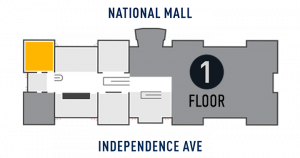Thomas Scott Baldwin was a U.S. Army major and pioneer balloonist. In 1904, Baldwin created a motorized hydrogen filled balloon using a Curtiss motorcycle engine. He later toured countries in Asia, making the first airplane flights in many locations. In 1911, Baldwin began testing a new airplane that was similar to the basic Curtiss Pusher design, but constructed of steel tubing instead of wood. These "Red Devil" aircraft were covered in rubberized red silk, and every surface was painted red. One is on display at the Smithsonian Institution's Udvar-Hazy Center. This is a propeller for a Red Devil.
In 1914 Baldwin returned to dirigible design and development, and built the U.S. Navy's first successful dirigible, the DN-I. He also trained airplane pilots and managed the Curtiss School at Newport News, Virginia. One of his students was Billy Mitchell, who would later become an advocate of American military air power.
Display Status
This object is on display in Early Flight at the National Air and Space Museum in Washington, DC.

Object Details
Date
1911
Country of Origin
United States of America
Type
PROPULSION-Propellers & Impellers
Manufacturer
Unknown
Physical Description
Type: Two-Blade, Fixed-Pitch, Wood
Diameter: 262 cm (103 in.)
Chord: 25.4 cm (10 in.)
Engine Application: Maximotor Model B-4 , In-line 4-cylinders, 52 kw (70 hp)
Dimensions
Rotor/Propeller: 261.6 x 25.4 x 14.6 x 1.1cm (103 x 10 x 5 3/4 x 7/16 in.)
Materials
Wood
Varnish
Ferrous Alloy
Enamel
Inventory Number
A19720763000
Credit Line
Gift of Mr. S.D. McCormick
Data Source
National Air and Space Museum
Restrictions & Rights
Usage conditions apply
For more information, visit the Smithsonians Terms of Use.